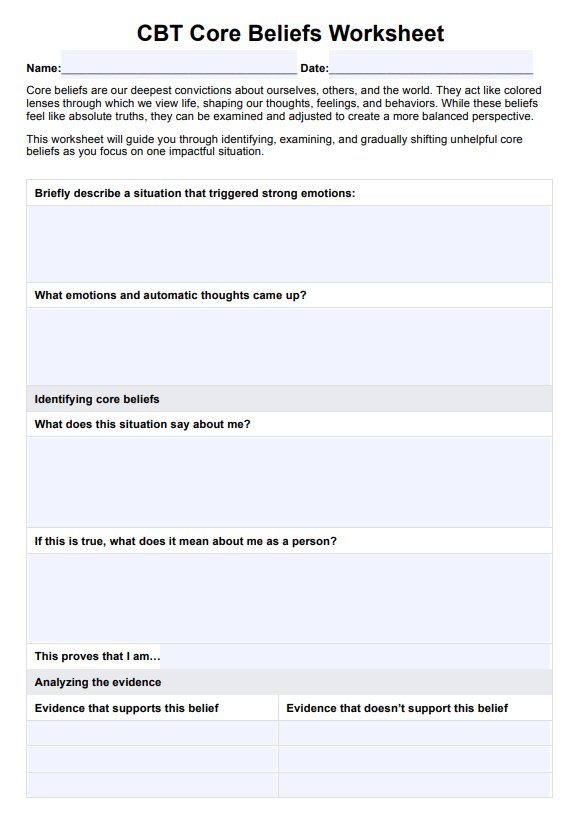Core beliefs in Cognitive Behavioral Therapy (CBT) are fundamental, deeply held beliefs about oneself, others, and the world that shape an individual's thoughts and behaviors. Examples of core beliefs include "I am unlovable," "I must be perfect to be accepted," or "The world is a dangerous place." These beliefs often stem from early life experiences, leading to negative thought patterns and emotional distress. This can influence how individuals interpret situations and respond to challenges.

CBT Core Beliefs Worksheet
Download our CBT Core Beliefs Worksheet to help clients identify and challenge unhelpful core beliefs.
CBT Core Beliefs Worksheet Template
Commonly asked questions
CBT Core Beliefs Worksheets are commonly used by mental health professionals, including psychologists, therapists, and counselors, as part of their therapeutic practice. These worksheets help clients identify, explore, and challenge their core beliefs in a structured manner. They can also be used by individuals undergoing self-help or personal development to gain insight into their thought patterns and work towards healthier beliefs.
Challenging core beliefs in CBT involves several steps. First, individuals identify their negative core beliefs through reflection and the use of worksheets. Next, they examine the evidence supporting and contradicting these beliefs by asking questions such as "What is the evidence for this belief?" or "Are there instances where this belief is not true?" Finally, individuals work on reframing these beliefs by developing more balanced and realistic alternatives, which can help alter their emotional responses and behaviors over time.
EHR and practice management software
Get started for free
*No credit card required
Free
$0/usd
Unlimited clients
Telehealth
1GB of storage
Client portal text
Automated billing and online payments











